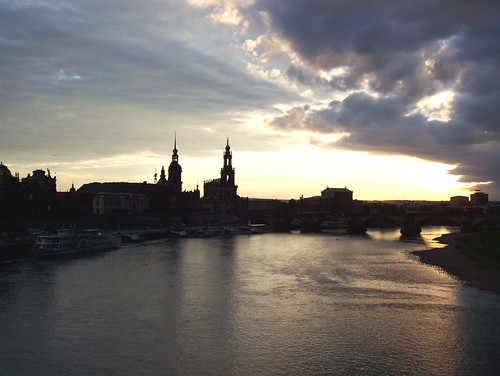Dresden
| Camera industry in Dresden |
| Balda | Certo | Eho-Altissa | Eichapfel | Ernemann | Feinmess | Heyde | Hamaphot | Huth | Hüttig | ICA | Ihagee | Kochmann | Kerman | KW | Eugen Loeber | Ludwig | Mentor | Merkel | Meyer | Mimosa | Pentacon | Richter | Sommer | Stübiger | Unger & Hoffmann | Werner | Wünsche | Zeiss Ikon | Zeh |
| Camera distributors in Dresden |
| Stöckig |
| Camera industry in Freital |
| Beier | Pouva | Stein & Binnewerg | Thowe | Welta |
Not merely the capital of Saxony, Dresden was also the capital of German photographic-related industries. In 1852 the famous photographer Hermann Krone moved to Dresden. Since 1865 photo paper makers built their factories in Dresden. From 1887 the city became the photography metropolis which it remained until 1990. Early camera makers there were:
- Richard Hüttig, (in 1887 his company moved from Berlin to Dresden)
- Wilhelm Franz Matthias (1888, from 1889 Ernemann & Matthias)
- Emil Wünsche (made cameras from 1889)
- Unger & Hoffmann (photo paper maker, started camera making in 1890)
- Paul Förster started production of cameras in 1893
- Ferdinand Franz Meyer, (made the Lysioskop and Lysiostigmat lenses from 1894 and cameras from 1897)
- Goltz & Breutmann started camera making in 1899
Many further optical companies were founded, some of which later merged, and until WWII many influential camera constructions had been introduced by Dresden's industry.[1]

|
| the city at the river Elbe image by Uwe Kulick (Image rights) |
Following World War II, Dresden became part of postwar East Germany (GDR, DDR) which belonged to the block of the socialist countries around the Soviet Union. Several companies were split into a privately owned part relocated to Western Germany, while the factory in Dresden became a state-owned entity. During the 41 years existence of the East German state (1949-1990) nearly all photography-related companies of Dresden were eventually merged into the state-owned Pentacon group. Pentacon became the first 'victim' of the German reunification: the "Treuhand", the office that had to sell or to liquidate East German companies, simply closed Pentacon, then one of the biggest and most influential East German "combinates" (VEB)[2].

|
| image by Uwe Kulick (Image rights) |
Notes and Sources
- ↑ Blumtritt, Herbert: "Die Geschichte der Dresdner Photo-Industrie", Stuttgart 2000; see also: www.dresdner-kameras.de
- ↑ VEB-Volkseigener Betrieb (literally: people-owned company)